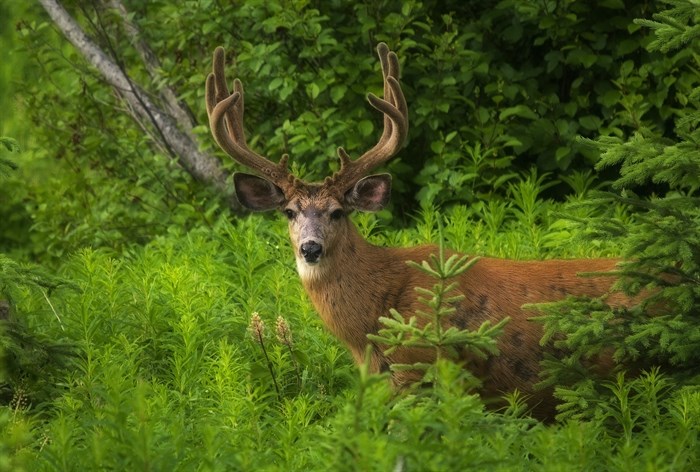
Image Credit: The Habitat Conservation Trust Foundation
September 07, 2020 - 8:00 AM
Residents near Penticton could start seeing more thriving wildlife in the area after the Christie Mountain Wildfire, according to a UBCO biologist.
Adam Ford, UBCO professor and chair of the Wildlife Restoration Ecology Lab, said wildfires are part of nature and benefits animals like mule deer and bighorn sheep.
Currently, Ford is conducting a mule deer study in the region, tracking them to determine the reason behind the decline in population.
READ MORE: Cougars and mule deer have a tight relationship, UBC Okanagan researcher says
Deer travel up to 100 kilometres for their migration, but they are fiercely loyal to migration pathways. When there’s a change in the pathway, researchers are asking how it affects their movement, behaviour and the survival of the young, Ford said.
He has been studying the impact of the Mount Eneas wildfire on the mule deer. That fire sparked from a lightning strike near Peachland in 2018.
READ MORE: Mountain goats unfazed by Mount Eneas fire
There’s a lot of plants that are dependant on fire to regenerate. Fire clears out smaller shrubs that become less edible for some species, while allowing other plants to grow that are often more nutritious for sheep and deer, he said.
“Fire isn’t such a terrible thing if we can find a place on the landscape for it to go,” he said.
Fire is an important part of healthy forests, so having it burn in rural areas while mitigating impacts on people is a careful balance researchers will have to determine in years to come, he said.
There's a possibility that residents may notice more critters in the area of the Christie Mountain wildfire.
“If the habitat conditions improve, which there are reasons to think it could, then they might see more animals in that area,” Ford said.
In the last few years, the province has hired cattle ranchers to get the animals to graze near wildfire interface zones.
The cattle are working in areas near Peachland, Summerland, Cranbrook and Merritt in order to mitigate the risk of wildfire fuels near homes.
But Ford doesn’t know how the cattle will impact wildlife.
“Fire is supposed to be good for plants but if we give the benefits of those plants to cows and ranchers, we have to make sure there’s enough for the wildlife too,” he said.
To contact a reporter for this story, email Carli Berry or call 250-864-7494 or email the editor. You can also submit photos, videos or news tips to the newsroom and be entered to win a monthly prize draw.
We welcome your comments and opinions on our stories but play nice. We won't censor or delete comments unless they contain off-topic statements or links, unnecessary vulgarity, false facts, spam or obviously fake profiles. If you have any concerns about what you see in comments, email the editor in the link above.
News from © iNFOnews, 2020